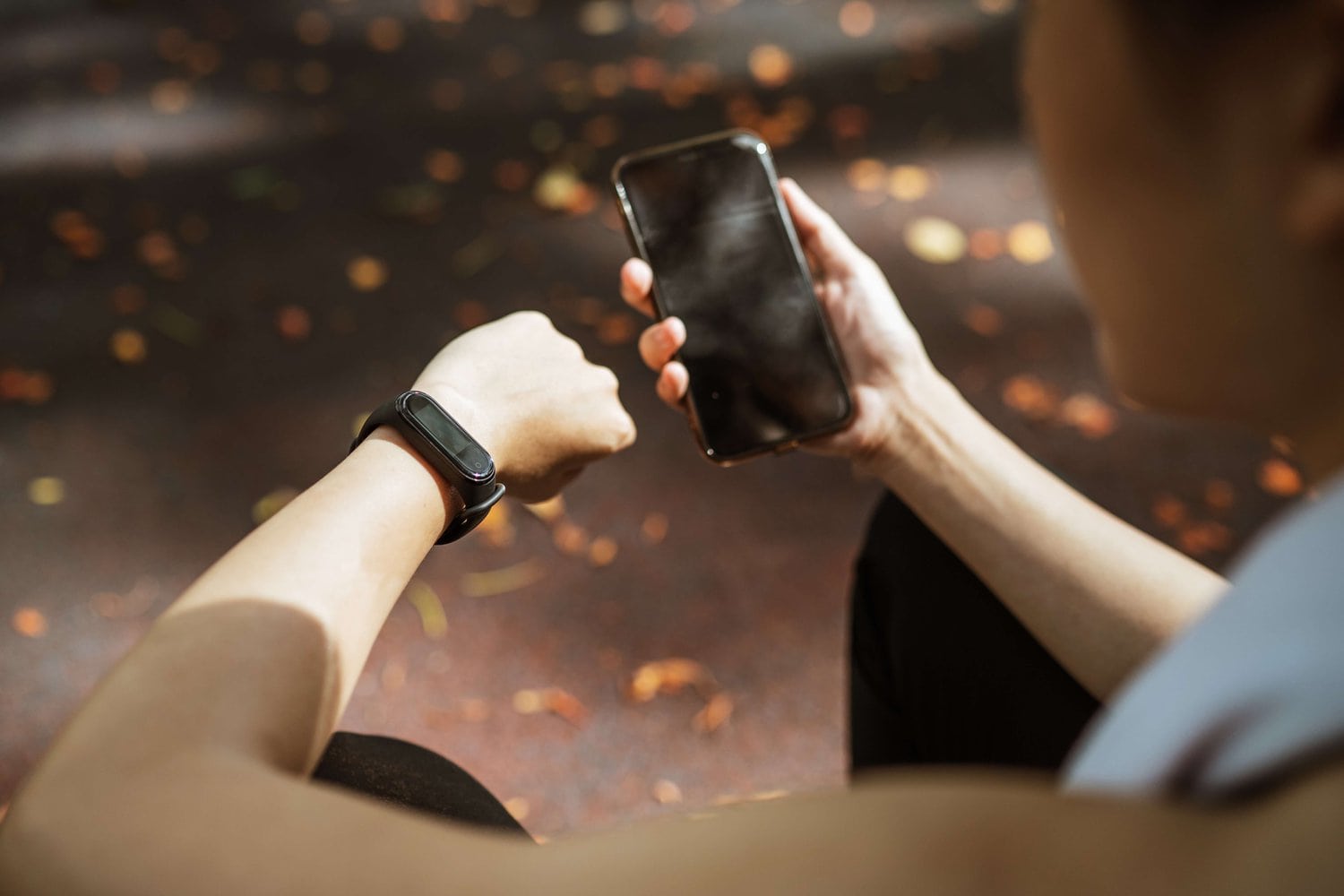COVID-19 pandemic has changed the world and healthcare forever. It outlined the crucial healthcare practice problems and caused a surge of mobile health applications aimed at quick and remote medical help.
Currently, 64% of patients admitted to using digital devices to monitor their health, and 71% believe this information could be helpful for their doctors.
In this guide to developing a mobile health app, we tell you how to create your own mobile health app, including the key steps, features to consider, cost estimation, and ways of making your application successful.
What Is a Mobile Health Application?
Mobile health or mHealth apps are a broad category of mobile software with different mHealth app business models. It includes a range of apps for clinical use, such as telemedicine apps for making appointments, virtual doctor visits, and obtaining prescriptions, as well as a variety of nutrition tracking, fitness, and wellness apps.
To track health and body parameters, mHealth apps use inbuilt smartphone tools, such as the GPS, accelerometer, camera, and others. Besides the smartphone tools, such apps can also use data from wireless wearable devices, including smart watches or wristbands with heart rate sensors, belt sensors, glucometers, blood pressure cuffs, or other wearable devices with sensing technologies.
Such apps help patients self-monitor physiological markers and help them stay on track with the recommended physical activity for weight goals, diet, sleep, and others. Some mHealth apps also have reminder systems aimed to help with glycemic control in diabetes, symptom monitoring in asthma and heart disease, and other health conditions.
If you are looking for a reliable mHealth app creation guide, keep reading to find out the key steps and challenges you may face.
Are You Sure That The Technology Your Company Is Using Doesn’t Hamper Business Growth?
Contact UsHow to Build a mHealth Application – Key Steps
1. Define your target audience.
Who are you developing a mHealth app for? Will doctors and hospitals use it? Or maybe you want to focus on patients? Define your end user to be able to outline their needs.
2. Examine your competitors.
Explore the current mHealth app market to define the major trends, pros, and cons of the existing apps to know what you can offer and improve.
3. Consider the features.
Based on your target audience and analysis of your competitors, you can make a list of the features you think will make your app outstanding.
4. Look out for the challenges.
When you create your own mHealth application, remember about legal compliance, data security, and user privacy to avoid future problems.
5. Estimate the cost
It depends on the number and complexity of features you think of when you plan to create your own mobile health app, the time frame for your app development, the platform to develop an app on, etc.
6. Think about how you can capitalize your app.
Would it be a paid app, have ads, or you will sell medicines or services through it – there are plenty of possibilities.
7. Find a reliable partner.
You don’t need to learn how to develop a mobile health app from scratch. You have your idea and plan. Let the experts implement it for you.
How to Develop a mHealth App – 8 Key mHealth Application Features
When working on custom mHealth app development, keep in mind that the features it would offer should meet your target audience’s needs. Let’s see what features would solve patients’ needs and make the app attractive:
Telemedicine and videoconferencing.
This solution is especially relevant in the time of the pandemic as it can replace doctor’s appointments in some cases.
Intuitive search and listing function.
Ensure the search within an app is optimized and includes relevant filters, suggestions, auto-completion, and other perks.
User-friendly dashboard.
A minimalist and easy-to-understand dashboard allowing users to track their activity and different statistics is a must for a successful mHealth app.
Medical record with automatic calculation function.
Easy managing of data and auto calculation of such parameters as optimal BMI or recommended calorie intake save users’ time and effort.
Cloud information storing.
It ensures that the data is saved and easily transferred from one device to another, which is surely an attractive function for any smartphone, tablet, and tracking device user.
AI algorithms integration.
AI can boost and improve functionality and help with a personal approach to each user.
Convenient notification.
Make using your app a habit for your user. Notifications ensure that users will remember your app even if they hadn’t been using it for a while.
Payment feature.
Naturally, you want to capitalize your app, so make sure you integrate a payment system into it to encourage the users to pay for the offered services or products via your app.
Challenges and Mistakes in Developing a mHealth App
It’s not easy to build a mHealth application that will meet customers’ needs and expectations and be competitive. Here we round up the most typical mistakes and challenges that can be faced and how to avoid them.
- Not knowing your target audience’s needs. Before starting working on mobile health app creation, make sure you know what the end user wants and needs from your application. To do so, analyze the current trends and your competitor apps.
- Complicated interface and unreliable tech. The goal of any mHealth app is to make the user’s life simpler. A cumbersome interface with long loading times is a major turn-off for users who want fast, easy-to-use service.
- Neglecting reliability and security. mHealth apps deal with sensitive medical data that requires extra protection and privacy. Ensure that the data is protected and inform your users of that.
Figuring Out the Cost of Creating Your Own mHealth Application
You can roughly estimate the cost of developing a mobile health app by considering these five parameters:
Number of features
The more features you want to build in your app, the more expensive it will be. On the other hand, the more intuitive and useful features your app has, the more likely it will succeed.
Project time frame
If you aim for fast results, be ready to spend more money.
App update plans
If you want to improve and update your app, put it in your budget before starting the project.
Platform choice
Creating an app for a single platform, iOS or Android is cheaper than building a cross-platform app. But to avoid future costs, we advise aiming for both platforms to reach as many clients as possible.
Developer hourly rate
Hourly rates can vary from $20 to $200 based on the developer’s location, experience, skills, and work speed. Worth noting that the rates greatly vary between the US and Eastern European developers not because of poorer quality of work, but because of different costs of living. So, if you want to save on your app development, keep this in mind and make your choice accordingly.
Examples of Quality mHealth Applications
Teladoc

The app allows patients to make remote doctor appointments 24/7. It offers its own platform for video visits and prescribing medications enabling a doctor to connect with the patient’s pharmacy of choice. The app also has Apple HealthKit integrated, allowing doctors to access patients’ most recent medical details.
The app has 394.3K reviews in Applestore with an average score of 4.8.
Better Help – Online Counseling

The app allows patients easy and cheap access to mental health professionals. It enables patients to get help in the form of video visits and chats with over 3000 accredited counselors specializing in different conditions.
The app has 11.2K reviews in Applestore with an average score of 4.6.
Noom: Weight Loss & Health

The app offers dietary plans and weight loss tracking, emphasizing mental health influence on weight-related health conditions and eating disorders. The app offers one-on-one health coaching, health quizzes, and motivational articles. It also allows users to track exercise, weight, blood sugar, and blood pressure.
The app has 291K reviews in Applestore with an average score of 4.4.
Jumpstart Your Project With Empeek
Get In TouchHow to Build a Custom mHealth App and Succeed? Consider Empeek Your Trusted Partner
Empeek is an IT company offering digitization services specializing in innovative IT healthcare solutions including mHealth app development services. In our portfolio, we have 20+ projects, from custom-made mHealth apps with unique features to integrated enterprise-level healthcare process improvement systems.
You don’t need to puzzle over how to build your own mHealth app – we have a team that can create for you the best app from scratch at an affordable price.
Our latest mHealth projects
- Real-Time Health Monitoring System Using IoT. The project implied developing an integrated monitoring system with 5 sub-systems: wearable devices (patch or wristwatch), iOS and Android user mobile apps, hospital workstations, cloud API server, and the admin area. The developed solution lets patients view recorded data and provides valuable insights for doctors and caretakers 24/7. It also includes a reminder system about medication intake and doctor’s appointments.
- EHR and Telehealth on a Single Platform. For this project, we improved the already existing EHR system with the addition of Telehealth and other features, including care provider and patient portals, one-click appointment scheduling, AI-powered data deduplication & reporting, medical imaging & lab results notifications, etc.
You can find more details about these and other projects in our “Cases study” section.








